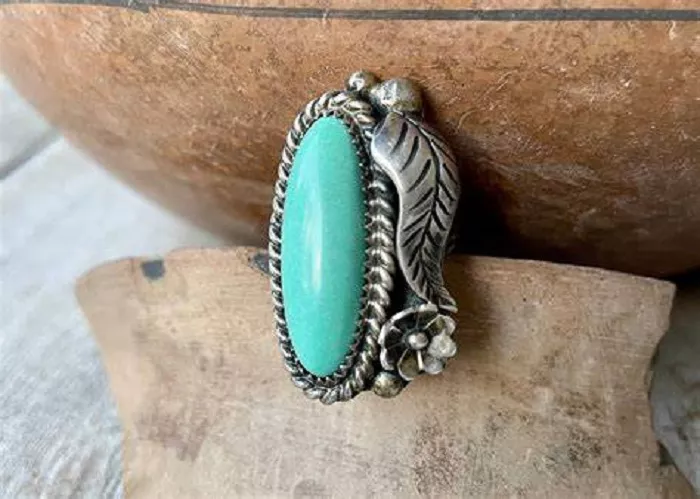Turquoise rings are among the most sought-after pieces of jewelry. Their vibrant blue-green hues and rich cultural history make them a favorite for many. But how does turquoise ring for sale? What should you look for when buying one? This guide will cover everything you need to know—from the types of turquoise available to pricing factors, authenticity checks, and where to buy the best rings.
What Makes Turquoise Rings Special?
Turquoise is a unique gemstone. It has been valued for thousands of years. Ancient civilizations, including the Egyptians, Persians, and Native Americans, treasured turquoise for its beauty and spiritual significance. Today, turquoise rings remain popular for their striking color and symbolic meaning.
Why Do People Buy Turquoise Rings?
Unique Color: Turquoise ranges from sky blue to deep green. No two stones are exactly alike.
Cultural Significance: Many believe turquoise brings protection, luck, and healing.
Versatility: Turquoise rings suit both casual and formal styles.
Durability: With proper care, turquoise can last for generations.
Types of Turquoise Used in Rings
Not all turquoise is the same. Different mines produce stones with distinct colors and patterns. Here are the most common types:
Natural Turquoise
Unprocessed: This turquoise is mined and cut without treatments.
Rare & Valuable: Natural, high-quality turquoise is becoming harder to find.
Variations: Some stones have matrix (veins), while others are pure blue or green.
Stabilized Turquoise
Treated for Durability: Many turquoise stones are too soft for jewelry. Stabilization (using resin or epoxy) makes them harder.
Common in Jewelry: Most commercial turquoise rings use stabilized stones.
Still Authentic: Stabilization does not make the stone fake—just more durable.
Reconstituted Turquoise
Made from Turquoise Powder: Low-quality turquoise is crushed and mixed with resin.
Less Valuable: These stones are not natural but can still look attractive.
Affordable Option: Good for budget-friendly jewelry.
Fake or Imitation Turquoise
Dyed Howlite or Magnesite: These white stones are dyed to look like turquoise.
Plastic or Glass: Some cheap rings use synthetic materials.
How to Spot Fakes: Real turquoise has natural imperfections. Fake turquoise looks too perfect.
Factors That Affect Turquoise Ring Prices
Why do some turquoise rings cost $50 while others sell for thousands? Several factors influence the price:
Turquoise Quality
Color: The most valuable turquoise is pure, bright blue (often called “Persian blue”).
Matrix: Some buyers love the spiderweb-like veins, while others prefer clean stones.
Origin: Turquoise from famous mines (like Sleeping Beauty or Persian) is more expensive.
Metal Used in the Ring
Sterling Silver: The most common setting for turquoise. Affordable and classic.
Gold (10K, 14K, 18K): Adds luxury and increases the price.
Platinum: Rare for turquoise rings but very high-end.
Craftsmanship & Design
Handmade vs. Mass-Produced: Handcrafted rings by skilled jewelers cost more.
Intricate Details: Rings with engravings, inlays, or multiple stones are pricier.
Brand Reputation: Designer brands charge more for their name and quality.
Rarity & Demand
Natural vs. Stabilized: Natural, untreated turquoise is rare and expensive.
Vintage Rings: Antique turquoise rings from famous makers can be valuable.
Trends: Turquoise jewelry prices rise when it becomes fashionable.
Where to Buy Turquoise Rings
You can find turquoise rings in many places, but quality varies. Here are the best options:
Local Jewelry Stores
Pros: You can see the ring in person before buying.
Cons: Limited selection, and prices may be higher.
Online Marketplaces (Etsy, eBay, Amazon)
Pros: Huge variety, competitive prices.
Cons: Risk of fake or low-quality turquoise. Always check reviews.
Native American Jewelry Sellers
Pros: Authentic, handcrafted turquoise rings with cultural significance.
Cons: Can be expensive, but worth the investment.
Auction Houses & Estate Sales
Pros: Chance to find rare, vintage turquoise rings.
Cons: Requires knowledge to avoid overpaying.
Direct from Turquoise Miners or Lapidaries
Pros: Get the highest-quality stones straight from the source.
Cons: Hard to find unless you visit turquoise mines (Arizona, Nevada, Iran).
How to Tell if a Turquoise Ring Is Real
Fake turquoise is common, especially in cheap jewelry. Here’s how to spot the real deal:
Check the Color
Real Turquoise: Has natural variations, slight imperfections.
Fake Turquoise: Looks too uniform, may have unnatural bright colors.
Look for the Matrix
Real Turquoise: Often has dark veins (matrix) from the host rock.
Fake Turquoise: May have painted-on “veins” that look fake.
Do a Scratch Test (Carefully!)
Real Turquoise: Harder than plastic but softer than quartz.
Fake Turquoise: Scratches easily if it’s dyed howlite.
Heat Test (Not Recommended for Fine Jewelry)
Real Turquoise: Won’t melt or smell like plastic when heated.
Fake Turquoise: May emit a chemical smell if it’s resin-based.
Ask for Certification
Reputable sellers provide gemstone authenticity certificates.
Caring for Your Turquoise Ring
Turquoise is softer than diamonds or sapphires, so it needs special care:
Avoid Water & Chemicals: Remove your ring before swimming or cleaning.
Store Separately: Keep it in a soft pouch to prevent scratches.
Clean Gently: Use a dry cloth—no harsh chemicals or ultrasonic cleaners.
Re-polish Occasionally: A jeweler can restore its shine if it dulls over time.
Conclusion
Turquoise rings are beautiful, meaningful, and timeless. Whether you buy a simple silver ring or a high-end gold piece, turquoise jewelry makes a statement. The key is knowing what to look for—real vs. fake, natural vs. stabilized, and fair pricing.
If you want a turquoise ring that lasts, invest in quality. Buy from trusted sellers, check authenticity, and care for it properly. With the right choice, your turquoise ring can be a cherished piece for years to come.
Related topics:
How to Tell if a Ring is Real Turquoise
Is Turquoise Jewelry Worth Anything: The Value of This Gem
What Does Turquoise Mean to the Navajo: Things You Need To Know


